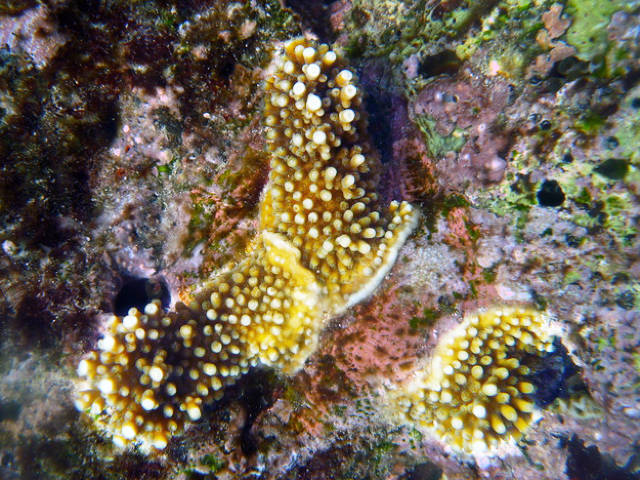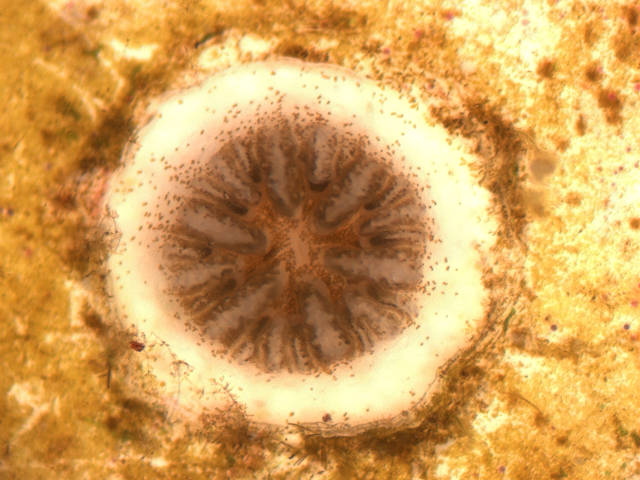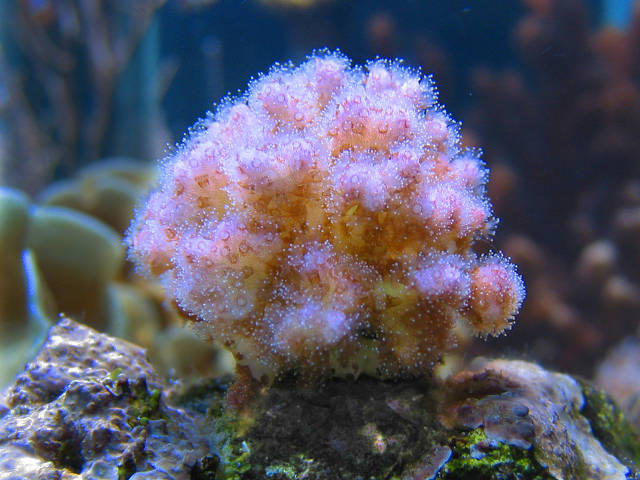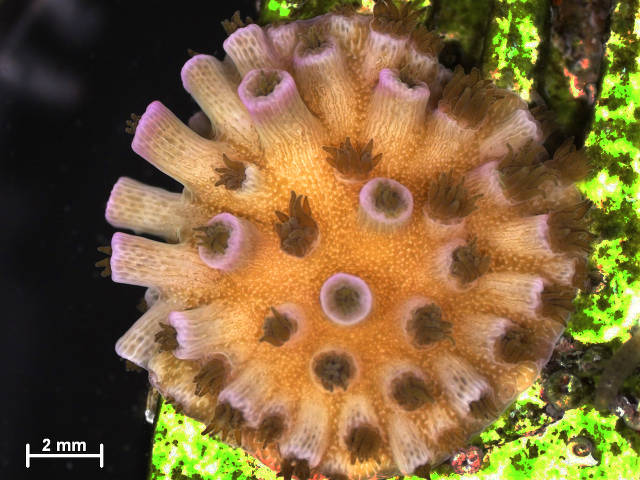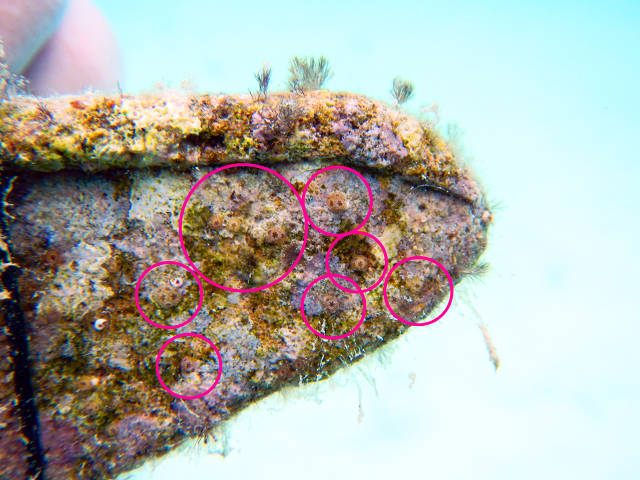Biology
Once settled (larval settlement), the coral recruits need to pass their first life stages—a challenging task for the tiny corals. The initial settler is usually around one millimeter in size and can easily be overgrown by algae or buried by sediment. Predation is an omnipresent threat. The tiny corals can be accidentally eaten by algae scrapers such as sea urchins, or fed on by natural coral predators such as butterflyfish and parrotfish. There are many diseases that may harm or kill the sensitive coral recruit.
Accordingly, coral mortality rates are relatively high during early life. As survival of the recruit becomes more likely with increasing size, it needs to grow quickly to pass through the most delicate stages. Like their parents, coral recruits glow under black light (Glowing Corals of the Dark). This can be used to detect coral recruits otherwise barely visible to the naked eye, especially under field conditions.
Application
By reducing stress and managing competition we can help a coral to outlive this sensitive phase of its life. It is most convenient to use natural control factors such as grazers, when working in a closed system. In field nurseries one may take advantage of the already present grazers. Often, nurseries float within the water column, so called mid-water-nurseries, making it hard for some predators such as sea urchins to reach the growing young colonies.
In land-based nurseries, especially in countries with limited logistics such as a reliable electricity supply, the whole system is susceptible to accidents, such as overheating or power breakdowns. Our recent scientific findings show that survival rates of elkhorn coral recruit were more than six-times higher when the recruits were transferred to the reef after only two weeks (Chamberland et al. 2015). Being transferred soon to the restoration site, has another advantage: the tiny corals can already adapt to the prevailing conditions. Sexually produced coral offspring are genetically diverse and thus may feature new genotypes that can potentially cope better with the conditions on modern reefs than their already struggling parents ('sexual coral restoration').
Up-scaling coral restoration to meaningful extents requires easy handling (Engineering Restoration). It is therefore absolutely necessary to reduce dwelling time within a land-based system to a minimum―if at all still necessary in the future.
Read more:
- about our Global Coral Restoration program
- about SECORE's work
- check out our Newsroom
- about corals and reefs at NOAAs coral 101 (US National Ocenanic and Atmospheric Administration, coral reef conservation program)
- at Nature.com's knowledge project about coral reefs
SECORE's mission is to create and share the tools and technologies to sustainably restore coral reefs worldwide.
You can make a difference: your donation is vital for us to continue where we excel - creating the tools to sustainably restore coral reefs around the world.







